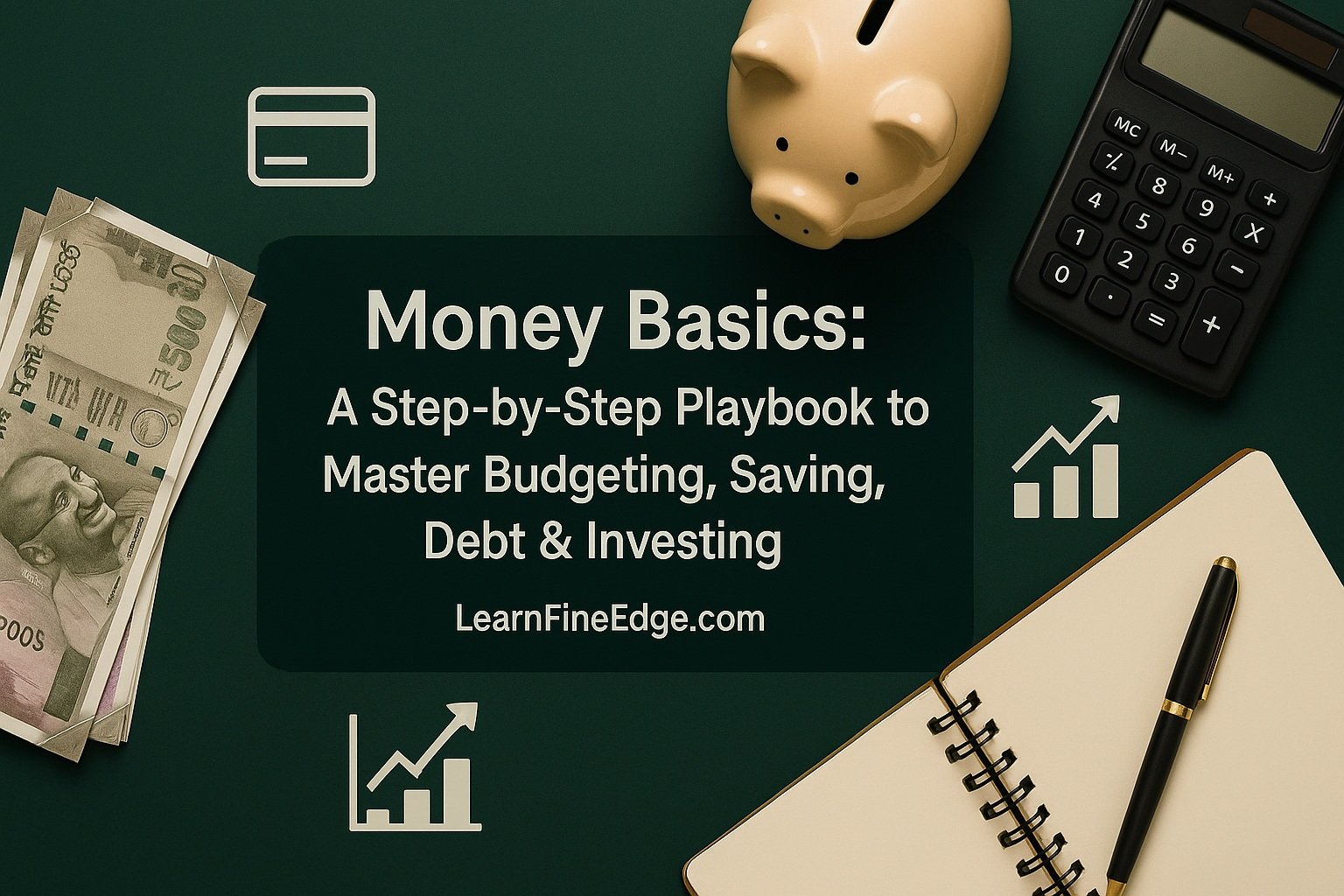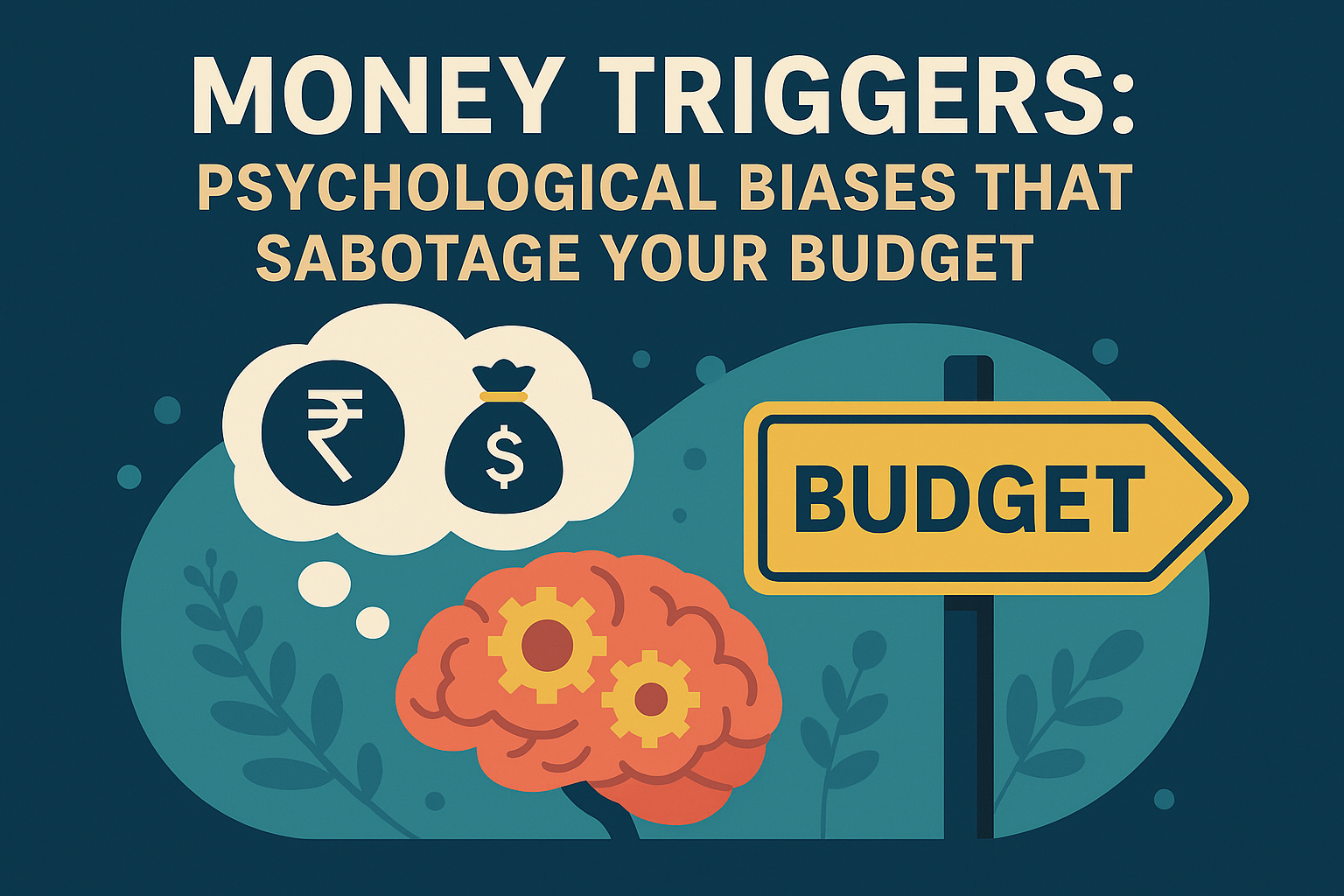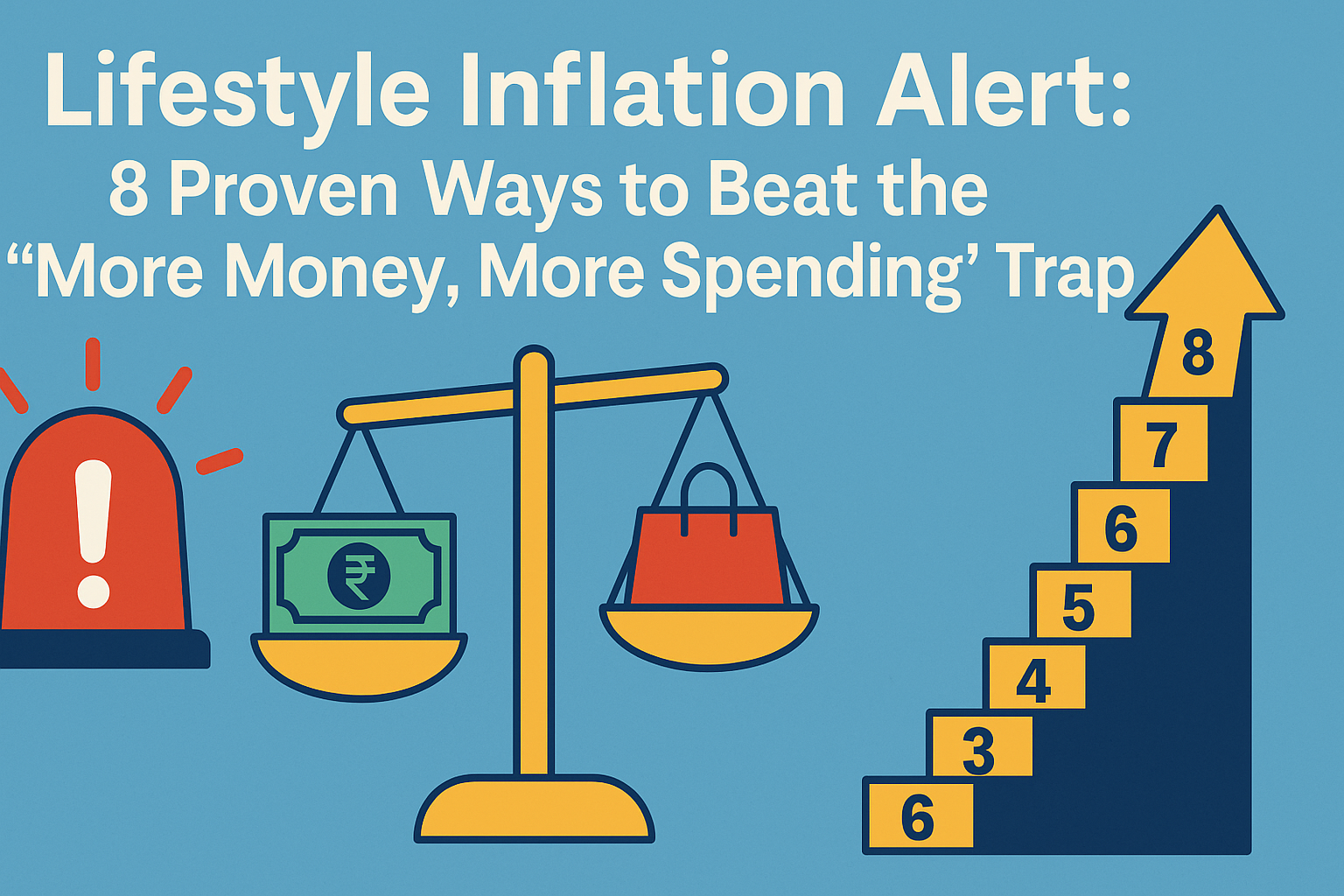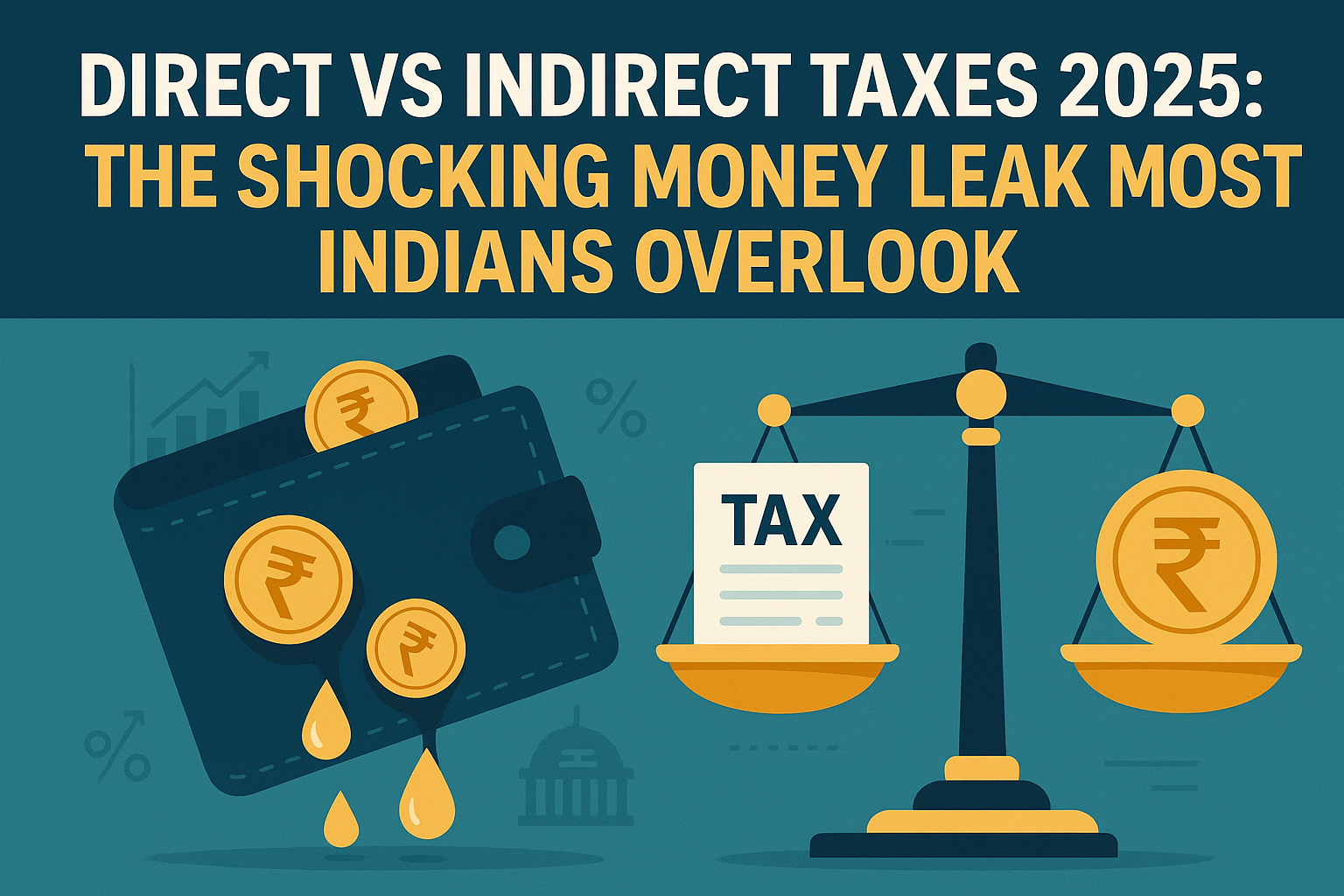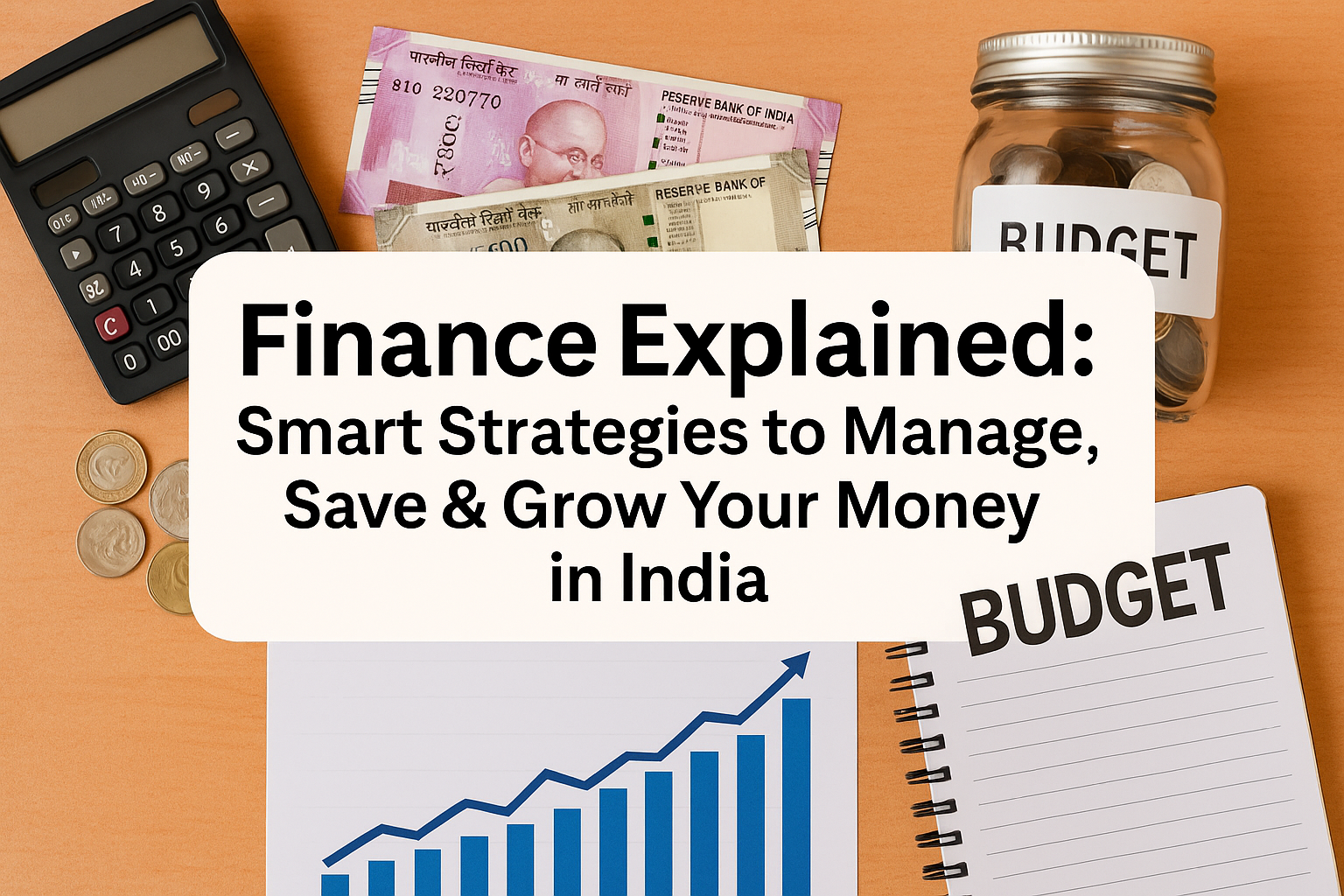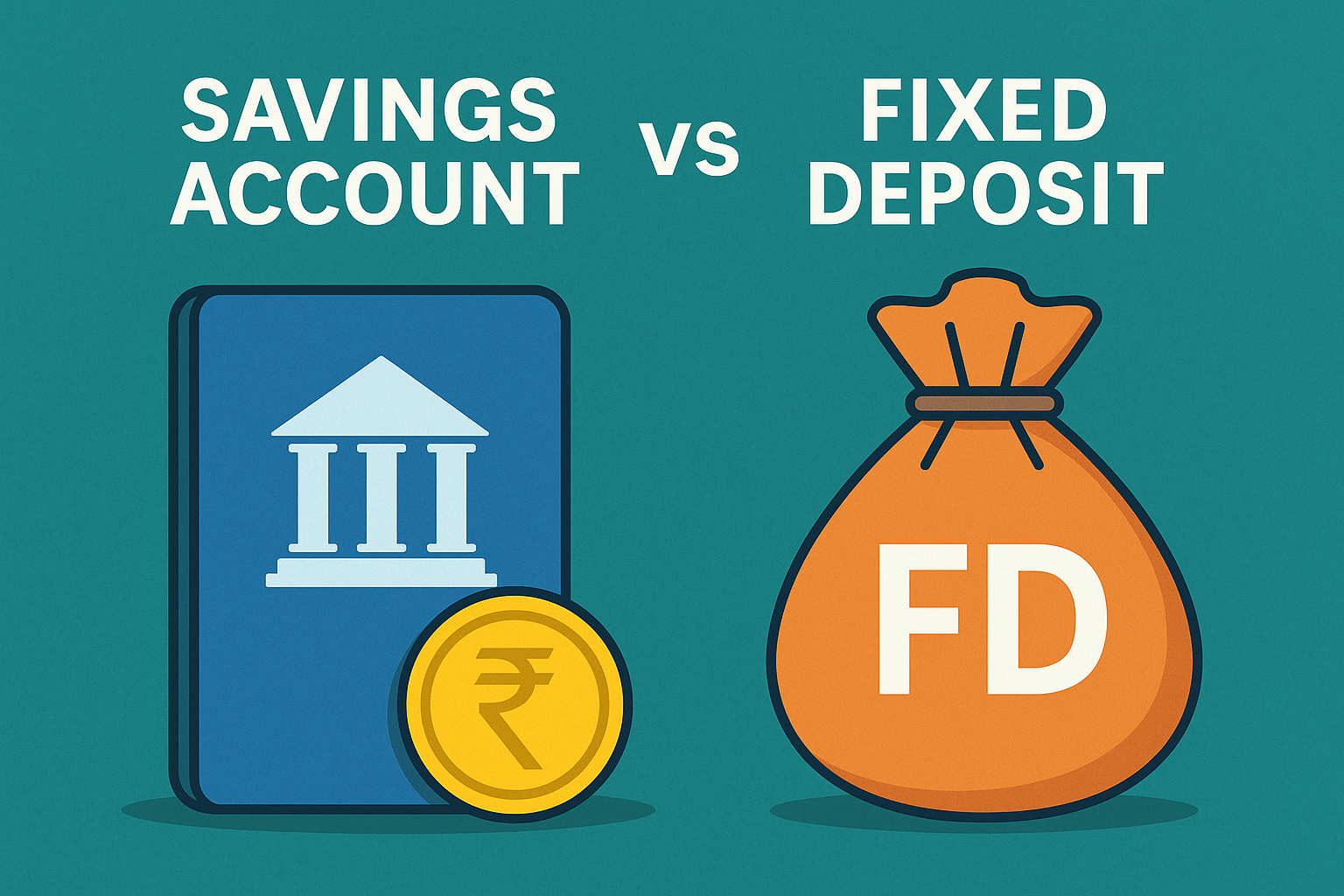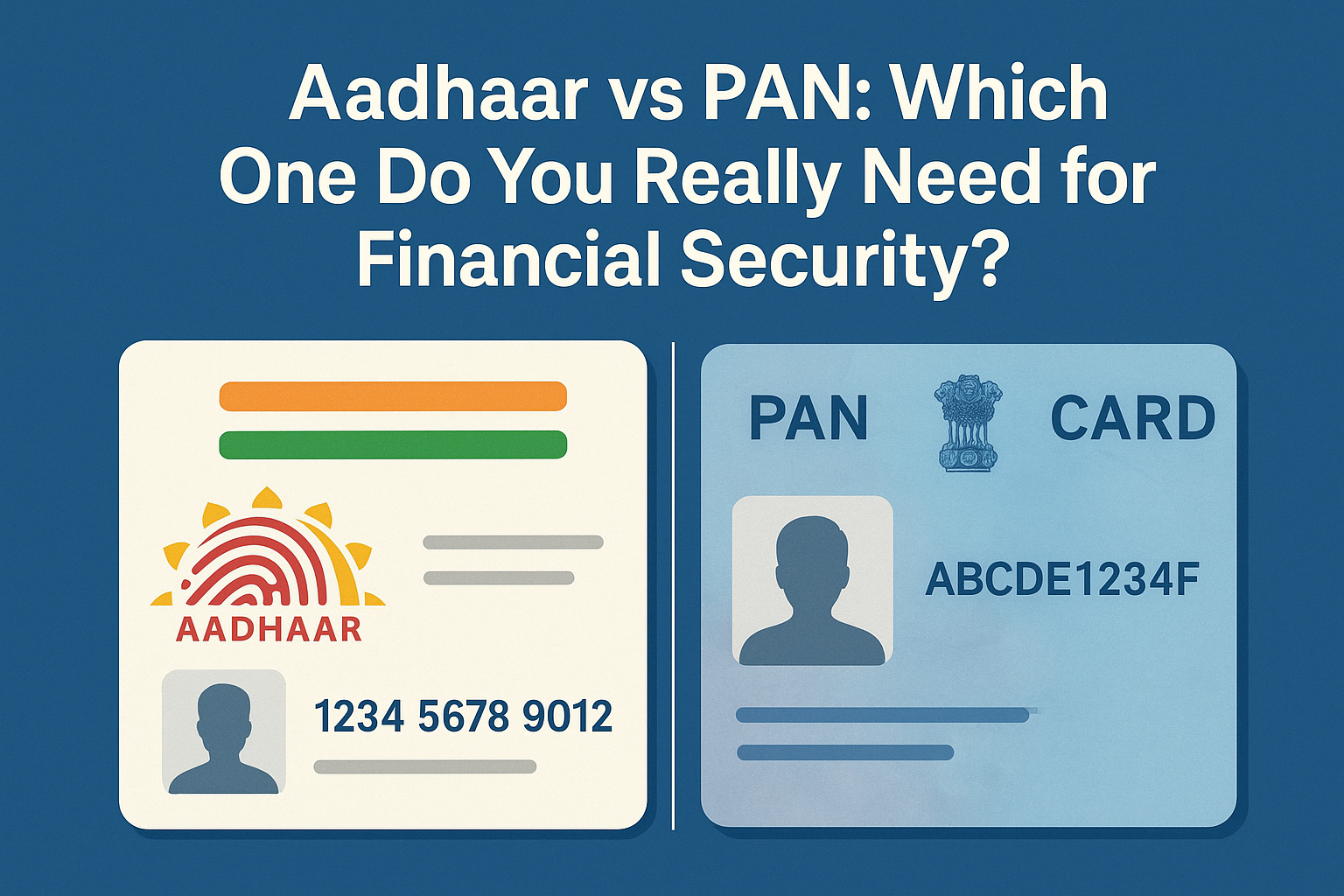
Term insurance is a straightforward risk-only cover that provides a lump-sum payout if you pass away during the policy term. Premiums tend to be low, so you can secure high death benefits without straining your budget. An endowment policy combines life protection with a guaranteed savings component: a portion of your premium builds cash value over time, which you receive either on survival to maturity or on an earlier surrender.
Choosing between term and endowment hinges on your priorities. If your main goal is pure financial protection for dependents at an affordable cost, term insurance excels. If you seek disciplined savings along with life cover—even if it means paying higher premiums—an endowment plan may suit your wealth-building objectives. We’ll explore how each policy aligns with different life stages, budget constraints, and long‐term goals so you can decide which option safeguards your family’s future while making the most of your hard‐earned money.
Could you please clarify the problem you are aiming to address?

Protecting dependants from income loss
When you imagine your family’s life without your regular pay cheque, it can be overwhelming. Term insurance specifically caters to that situation. You pay a modest premium in exchange for a substantial death benefit that kicks in if something happens to you during the policy term. This straightforward exchange means your loved ones can pay household bills, cover day-to-day expenses, and maintain their current lifestyle without dipping into savings or taking on debt. Because term cover focuses purely on protection, you get more coverage for every rupee spent, giving you confidence that your family’s financial needs are met when they need it most.
Combining life cover with disciplined savings
If you struggle to set aside money each month, an endowment policy can act like a forced savings account wrapped into one plan. A portion of your premium funds the life cover, and the remaining amount accumulates as a guaranteed cash value. Over time, this cash value grows at a predetermined rate, helping you accumulate a nest egg without having to juggle separate investment accounts. This disciplined structure ensures you stay on track with your savings goals even when market volatility makes other options feel risky. You end up with both peace of mind that your family is protected and a lump sum you can access later.
Meeting specific milestones (education, mortgage payoff, retirement)
Careful planning is required for life milestones such as a child’s college fees, clearing your home loan, or funding your golden years. Endowment policies allow you to align your savings component with these milestones by choosing a policy term that matches their timeline. For example, a 15-year plan could coincide with your mortgage tenure, while a 20-year plan might mesh with your child’s university start date. Upon reaching policy maturity, you receive a lump-sum payout that can be used to cover tuition fees, settle outstanding loans, or supplement your retirement corpus. This integrated goal orientation enables you to manage significant financial obligations without frantically searching for funds at the last moment.
How Does Term Insurance Work?
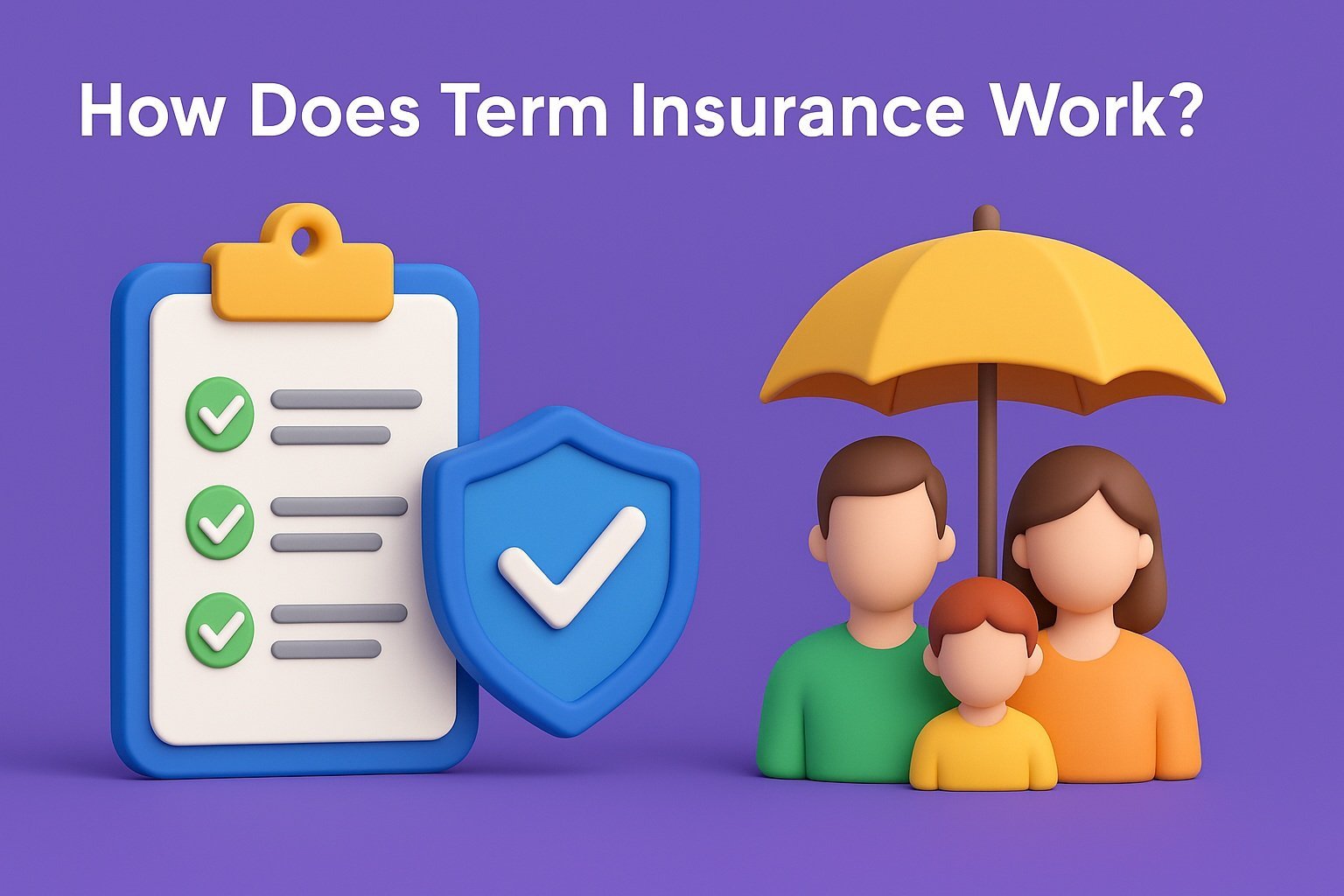
Core features (high cover, low cost, no maturity value)
Term insurance is all about simplicity. You choose a sum assured—the amount your family would receive if you pass away during the policy term—and pay premiums that remain level throughout. Because the plan provides only death benefit protection without any savings or investment component, premiums are typically much lower compared to other life insurance options. Unlike endowment or money-back policies, term cover comes with no maturity value, which means if you outlive the chosen term, there is no payout. You can, however, add riders such as critical illness or accidental death benefits to enhance protection without dramatically inflating costs.
Key benefits for young families & high-liability earners
Young professionals juggling home loans, car EMIs, or planning to start a family will find term insurance especially appealing. Low premium outgo lets you secure a high coverage amount—often ten to twenty times your annual income—so that your dependents can clear debts, cover living expenses, and pursue their goals uninterrupted. High-liability earners, such as business owners or individuals with multiple financial commitments, benefit from the flexibility of term plans: you can tailor the coverage amount and policy duration to match your outstanding liabilities, ensuring that your family isn’t left with a financial burden in your absence.
Limitations: no payout if you outlive the term
Term insurance shines as a cost-effective protection tool, but it has one clear drawback: if you survive the policy term, there’s no maturity benefit or return of premiums. In essence, all premiums paid serve purely to underwrite risk, not to build a cash corpus. This lack of savings component means you’ll need a separate investment strategy—such as mutual funds or fixed deposits—to grow your wealth over the long term. For those who want both protection and savings in one package, it may be necessary to explore other policy types or combine term cover with dedicated investment plans.
How Does an Endowment Policy Work?

Core features (life cover + guaranteed maturity/survival benefit)
An endowment policy blends life protection with a guaranteed payout at the end of your chosen term. You pay fixed premiums throughout the policy duration. If you sadly pass away before maturity, your nominee receives the sum assured plus any accrued bonuses. If you survive to the policy’s end date, you get back the sum assured along with guaranteed maturity benefits and any vested bonuses. This dual structure provides coverage for life risks and steadily builds a reliable cash corpus, irrespective of market fluctuations.
Key benefits for conservative savers seeking lump-sum goals
For someone who prefers predictable growth over market-linked returns, an endowment plan offers a clear advantage. The guaranteed maturity benefit acts like a forced savings mechanism that matures at your target date—be that when your child starts college or when you want to repay a major loan. This savings pool receives a portion of each premium, eliminating the need for separate investments or market timing. By locking in both protection and a lump-sum payout, you can plan around specific life goals with confidence and avoid the temptation to dip into funds meant for long-term objectives.
Limitations: higher premiums, lower pure protection
Because endowment policies combine savings and insurance, their premiums are significantly higher than pure term cover. A larger portion of your premium goes toward building the guaranteed benefit rather than death benefit protection. As a result, for the same premium outlay, you’ll receive a much lower sum assured compared to a term plan. If your priority is maximising coverage at minimal cost, you might find endowment plans less efficient. Those seeking the highest level of risk protection should consider pairing a term policy with separate investment vehicles to optimise coverage and create wealth.
Side-by-Side Comparison: Term vs Endowment
Premium outlay and affordability
When budgeting for life cover, premiums make a big difference. Term insurance offers the most cost-effective route: a pure risk policy means you pay minimal annual premiums for high cover. In contrast, an endowment policy commands significantly higher premiums because a portion of each payment goes toward building guaranteed savings. If you have tight cash flow or want to maximise protection per rupee, term coverage wins over affordability. Those willing to pay more each year for a built-in savings plan may find endowment premiums acceptable.
Sum assured vs maturity value
With term insurance, your family only receives the sum assured if the policy claim is triggered, and there’s no maturity amount if you outlive the term. Endowment plans split your benefits: your nominee gets the sum assured plus bonuses on death, and you receive the same sum assured plus maturity benefits when the policy ends. If you compare numbers, a term’s death benefit can be two to three times higher than an endowment’s sum assured for the same premium spend, but endowments guarantee a lump sum at maturity that term plans simply don’t offer.
Returns and opportunity cost
Term cover delivers protection without any savings component, so there’s zero return on premiums paid if you survive the term. This opportunity cost makes sense if your priority is pure protection and you prefer to invest elsewhere. Endowment policies guarantee a fixed maturity benefit and bonuses, but those returns often trail market-linked investments such as equity funds or corporate FDs. Conservative savers appreciate predictability, while those seeking higher long-term growth may lose out on potential returns.
Tax treatment under current Indian laws (Sections 80C & 10(10D))
Both term and endowment premiums qualify for a deduction under Section 80C up to ₹150,000 per financial year, reducing your taxable income. On maturity or claim, endowment payouts are tax-free under Section 10(10D) provided certain conditions are met, such as a maximum annual premium limit relative to the sum assured. Pure term benefits are also exempt under Section 10(10D). In effect, both products offer similar tax advantages, so your choice won’t hinge on tax efficiency.
Flexibility: riders, surrender options, loans, convertibility
Term plans let you take on rides like critical illness, accidental death, or a waiver of premiums to customise your coverage without dramatically increasing cost. You can also convert many term policies into a permanent plan before a specific age. Endowment policies allow policy loans against the cash value and partial surrenders when you need liquidity, but adding riders often raises premiums substantially. Surrendering early may attract penalties and reduce your guaranteed payout, so flexibility varies between the two, depending on how you plan to use policy features.
Here’s a quick comparison to bring these points together:
Strategy Steps to Choose the Right Plan

Step 1: Calculate your human-life value & protection gap
Start by estimating the financial value you bring to your family over your working years. Multiply your annual income by the number of years until you plan to retire, then add amounts for outstanding liabilities like loans. Next, subtract any existing savings or insurance coverage. The remaining amount represents your protection gap, or the necessary death benefit. This calculation ensures your life cover aligns with real financial needs rather than an arbitrary figure.
Step 2: Assess your savings horizon and liquidity needs
Please consider the timing of when you will require lump sums for objectives like a child’s education or a home down payment. If you have a long horizon and can lock away funds, a plan with a built-in maturity benefit may work. If you need flexibility to access cash sooner, pure term cover combined with liquid investments like PPF or an emergency fund could be better. Align your policy term and savings vehicle with the timing of each major expense.
Step 3: Stress-test premiums against monthly cash flow
Before you commit, run a realistic budget that factors in premiums alongside rent, utilities, groceries, and other obligations. Simulate scenarios such as a temporary income dip or unplanned expense to ensure you can maintain premium payments without strain. If term premiums fit comfortably but endowment rates feel tight, that signals where cost-effective protection lies.
Step 4: Use a blended approach if goals differ (term + PPF/ELSS vs endowment)
If you want maximum risk cover plus disciplined savings, consider buying term insurance for high protection and channelling the balance of your budget into tax-efficient instruments. Investing in PPF or ELSS alongside term cover can yield potentially higher returns and liquidity while preserving pure life cover at minimal cost. This hybrid strategy lets you tailor protection and growth separately.
Step 5: Review every three years or on life-event triggers
Your needs evolve as you marry, add children, or clear debts. Schedule a policy review at least once every three years or whenever you face a major life change such as a job switch, home purchase, or salary increase. Adjust your sum assured, policy term, or investment allocations to stay aligned with your protection gap and financial milestones. Regular check-ins ensure your plan remains both relevant and affordable.
Real-Life Scenarios
Young professional with no dependants: term + SIPs
Imagine you’re in your mid-20s, single, and just starting to build your career. Rent and living expenses may be your biggest obligation, so protecting against income loss doesn’t have to be expensive. A high-sum assured term insurance policy coupled with systematic investment plans in equity mutual funds (SIPs) strikes a wonderful balance. Term cover ensures your family won’t face debt if the unexpected happens, while SIPs help you accumulate wealth over time through rupee-cost averaging and compounding.
Young family with mortgage: high-cover term + child-goal endowment
Suppose you and your partner have a new home loan and a toddler on the way. Your priority is to clear liabilities and fund future expenses like school fees. Opt for a term plan with enough coverage to pay off the mortgage plus living expenses and add a goal-specific endowment policy designed to mature when your child reaches college age. This combination secures your family against financial shock today and guarantees a lump sum for education or loan repayment down the road.
Mid-career saver aiming for tax-efficient corpus: balanced mix
At 40, you’ve accumulated some savings but still want efficient tax planning alongside protection. A medium-term endowment plan with limited pay options can lock in a guaranteed maturity benefit while keeping premiums lower than a full-term endowment. Supplement your current plan with a term policy sized to close any remaining protection gap. The endowment provides a tax-free corpus under Section 10(10D), and the term cover maximises pure protection while your ELSS or PPF investments handle additional wealth creation.
Near-retirement couple focused on capital safety: limited-pay endowment
As you approach retirement, capital preservation becomes paramount. A limited-pay endowment policy, which allows you to pay premiums for a shorter duration while still enjoying life cover and maturity benefits, is a suitable option. You lock in guaranteed returns and access the accumulated sum within a planned timeframe without market risk. A small term rider provides additional protection by topping up death benefits without extending premium payments into retirement.
Here’s a concise comparison to illustrate the mixes:
| Scenario | Protection Vehicle | Savings Vehicle |
|---|---|---|
| Young professional, no dependants | High-sum assured term insurance | Equity SIPs |
| Young family with mortgage | High-cover term insurance | Child-goal endowment policy |
| Mid-career saver, tax-efficient corpus | Term insurance for protection gap | Limited-pay endowment + ELSS/PPF |
| Near-retirement couple, capital safety | Term rider for top-up cover | Limited-pay endowment policy |
Quick-Reference Decision Checklist
-
Have you calculated your true protection gap by factoring in your human-life value and outstanding liabilities?
-
Does the chosen policy term align with your key milestones, such as your child’s college or mortgage payoff date?
-
Will the premiums comfortably fit into your monthly budget, even if your income dips or you face unexpected expenses?
-
Which riders (critical illness, accidental death, waiver of premium) add meaningful cover without inflating costs?
-
If you’re considering an endowment plan, what guaranteed maturity benefit and bonuses will you receive at term end?
-
What happens if you surrender the policy early—are there penalties that could erode your cash value?
-
How does the sum assured compare to the policy’s maturity value or survival benefit?
-
What tax savings will you unlock under Section 80C, and is your eventual payout exempt under Section 10(10D)?
-
Can you access liquidity via policy loans or partial withdrawals, and under what conditions?
-
Is there an option to convert your term plan into a permanent policy if your needs evolve?
-
When will you revisit this plan? Schedule a review at least every three years or after major life events.
FAQ
Is term insurance always cheaper than an endowment plan?
Yes. Term insurance focuses purely on death cover, so premiums are much lower compared to endowment plans, where part of your payment builds guaranteed savings. If you pay the same premium for a term plan and an endowment plan, the term policy will typically offer a two- to three-times-higher sum assured.
Can I convert a term plan into an endowment policy later?
Many insurers let you convert a term policy into a permanent or savings‐linked plan before a specified age without fresh medicals. This convertibility feature gives you flexibility if you decide you also want a guaranteed maturity benefit down the line.
Will an endowment policy give better tax benefits than a term plan?
Both policy types qualify for the same tax break under Section 80C (up to ₹150,000 in premiums). Payouts from either a claim or maturity are generally tax‐free under Section 10(10D), provided the policy meets prescribed conditions. So tax treatment won’t be a deciding factor.
What happens if I surrender an endowment policy early?
Surrendering before the lock-in period usually triggers penalties and reduces your guaranteed payout. You may receive only the surrender value, which grows slowly in early years and may be significantly lower than total premiums paid.
Is buying both the term and the endowment together a beneficial idea?
Combining a high-cover term plan with a separate savings vehicle like PPF or ELSS often outperforms a single endowment plan. However, if you prefer a one-stop solution and disciplined savings, pairing term cover for peak protection with a small endowment for lump-sum goals can be an effective hybrid.
Which plan suits someone with irregular income?
If your cash flow fluctuates, a pure term plan with low, predictable premiums is safer. You can then adjust your savings contributions—top up SIPs or PPF—whenever you have surplus funds. That way, you maintain essential cover even when income dips and save flexibly around your earnings.


